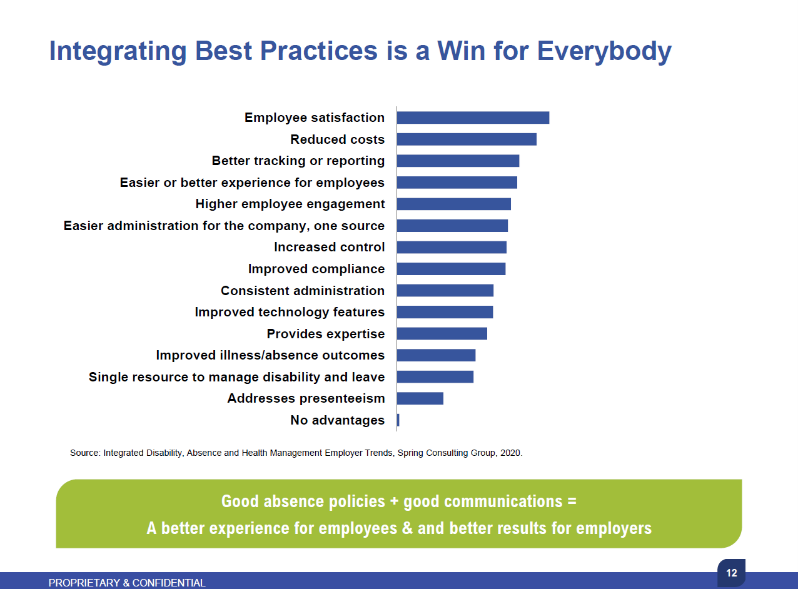
A Recap of NEEBC’s Beyond the Basics (Level 2) Event
Last week I had the honor of presenting at the New England Employee Benefits Council (NEEBC)’s Health & Welfare: Beyond the Basics (Level 2) event. The event provided great insights into how employers can adapt their corporate culture and provide strong benefits to attract and retain top-tier talent. Sessions focused on the following four critical areas of health and welfare: healthcare, data analytics, lifestyle accounts, and employee absence.

- Healthcare
David Chamberlain from Brown & Brown clarified the difference between health and wellness and steps employers can adopt to promote preventative care. He later dove into the differences and advantages of discount analysis verses repricing and how this all ties into pharmaceutical needs. Finally, he outlined the landscape of Pharmacy Benefit Managers (PBMs) and how new disrupters such as Amazon Pharmacy are able to provide pharmaceutical capabilities for people with and without insurance.
- Data Analytics
Mary Delaney from Vital Incite explored the need for data when developing benefits strategies. She explained how data such as age, gender, medication patterns, likeliness of hospitalization and other indicators are essential when developing a health/medical insurance plan. Lastly, she explains how this data can be collected through employee needs surveys and analyses of national health data trends.
- Lifestyle Accounts
Firstly, Jennifer Aylwin from Vertex Pharmaceuticals gave a short background on lifestyle accounts (LSAs) and how they can appeal to a range of employee needs. Due to the COVID-19 pandemic, many employees are now working in a hybrid or remote setting, and LSAs are a good practice to keep those employees content and engaged. She ended her presentation with an exercise where the audience was able to develop a business case for leadership consideration of LSAs.
- Absence

As for absence management, I had the pleasure of presenting on this topic. I started by exploring some of the benefits of adopting integrated absence management policies, such as reducing administrative costs and fostering a positive corporate culture where employees feel valued. I ended by showing how strong absence policies paired with effective communication of those policies have proven to provide a better experience for employees and greater workplace efficiency.
All in all, it has been great finally being able to see so many familiar faces in person again. As we adjust to a post-pandemic life, it is essential that we implement health and welfare strategies that match the need of employees currently. Keep an eye out for Spring at upcoming NEEBC events here.


